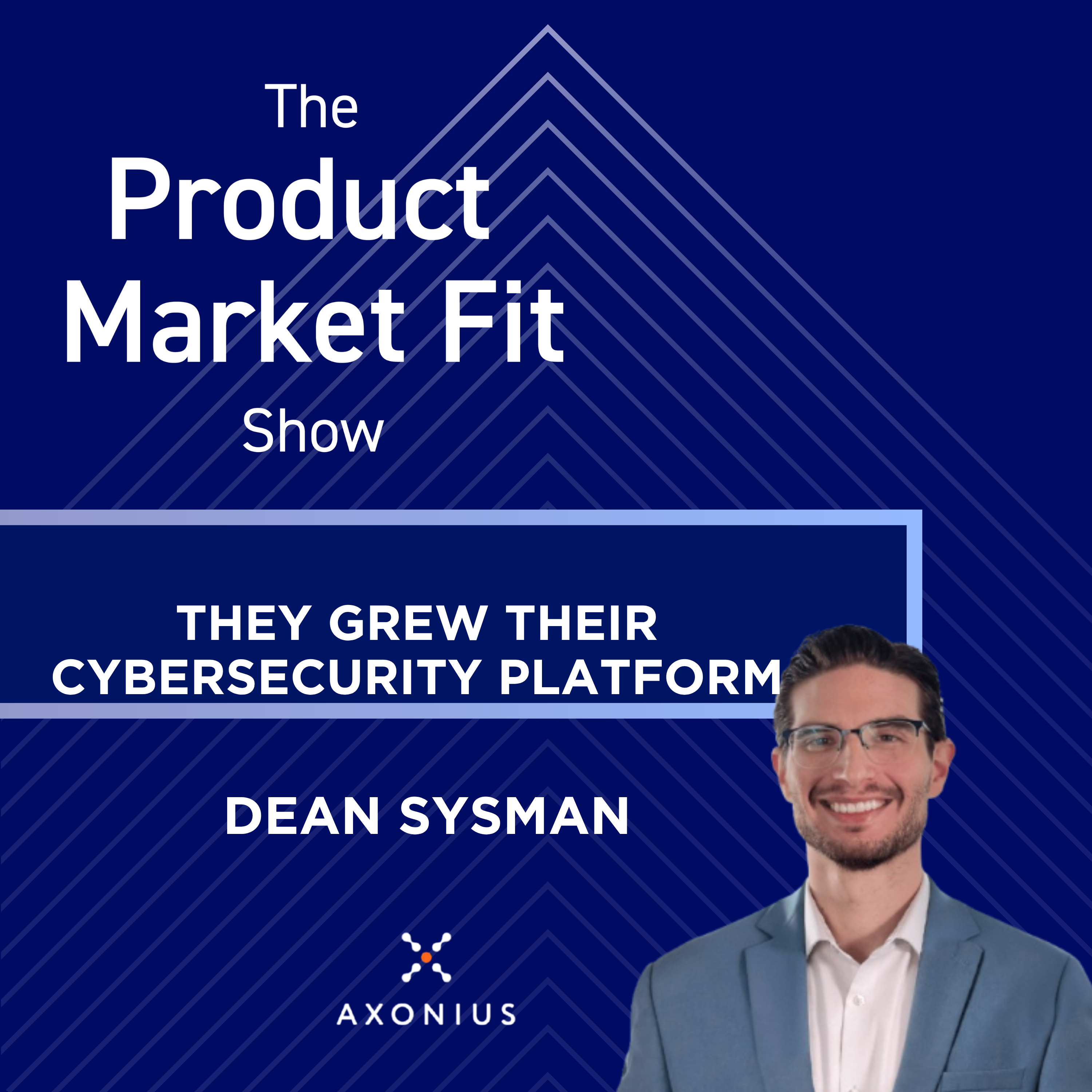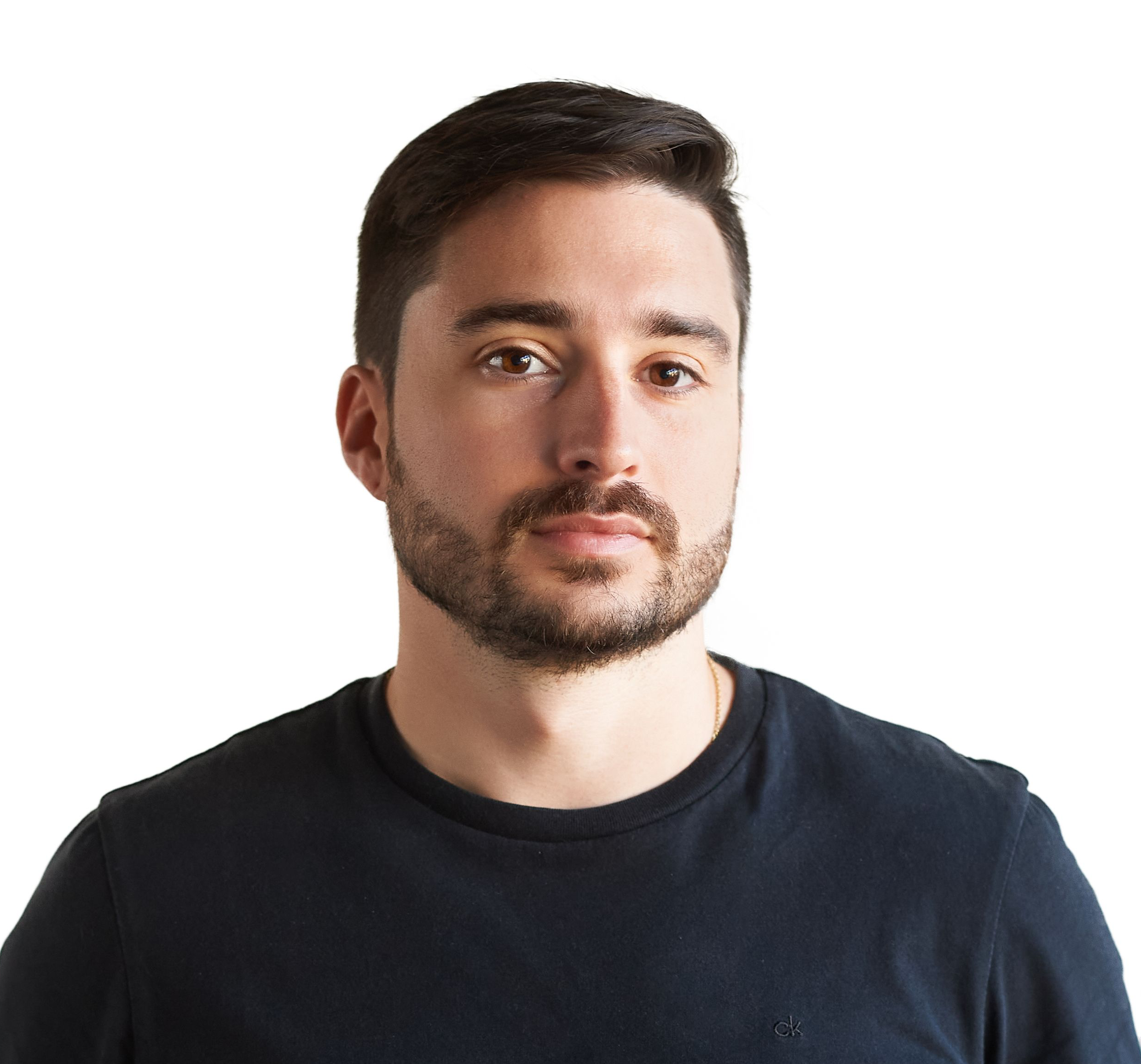How Axonius Hit $100M ARR in 4.5 Years: The Product Market Fit Blueprint Most Founders Miss

Dean Sysman woke up in the cheapest hotel room on the Las Vegas Strip, dreading the call he was about to make.
His startup, Axonius, had just finished another proof-of-concept with a potential customer. Like the previous POCs, it had been plagued with bugs. The technical buyer's question that morning was textbook rejection: "Is there anything else in your offering that I didn't get to evaluate?" Translation: I'm not impressed, and I'm covering my tracks before I say no.
A few hours later, Dean walked into a customer meeting expecting to get told "thanks, but no thanks." Instead, he walked out with his first paying customer—a deal that would kick off one of the fastest growth trajectories in B2B SaaS history.
What changed in those few hours? A single slide showing that Axonius had fixed 20 bugs in 1-2 days each—while competing vendors measured response times in quarters.
That moment in August 2018 marked true product market fit. Within 12 months, Axonius hit $1 million ARR. Eighteen months later: $10 million. By 4.5 years: $100 million ARR. They've now raised over $500 million and maintain an NPS score in the high 70s to low 80s—nearly unheard of in cybersecurity, where Gartner research shows only 1 in 10 startups successfully achieve product market fit.
The real insight? Axonius succeeded by understanding which of three distinct market journeys they were on—and optimizing for that specific path. Most founders fail because they apply the wrong playbook to their market reality.
Key Takeaways
- Axonius raised $500 million after initially thinking they'd need to bootstrap
- Achieved $1M ARR in under 12 months, $10M in 18 months, and $100M ARR in 4.5 years
- Maintains NPS scores of 70-80, among the highest in cybersecurity
- Created an entirely new category now recognized by Gartner and Forrester
- Time-to-value under 30 days became their competitive advantage
- First customer came after multiple failed POCs, proving persistence wins in enterprise
The Three Market Journeys Every Startup Must Navigate
Before diving into Axonius's story, you need Dean Sysman's framework for understanding market opportunities. This explains why some startups scale effortlessly while others grind for years.
Journey #1: Next-Gen in an Established Category
Think Salesforce (next-gen CRM) or CrowdStrike (next-gen endpoint security). The market exists, buyers have budgets, and everyone knows the category name.
Success factor: Superior sales execution. According to McKinsey's B2B research, 77% of buyers in established categories face "complex or difficult" purchase processes due to vendor competition. You only need to win by "one point" to capture the deal.
Journey #2: New Category with Immediate Hype
This happens when new technology creates sudden demand—like cloud security when AWS exploded, or AI tooling today. Wiz exemplified this, reaching a $23 billion valuation offer in under 4 years.
Success factor: Biggest brand fastest. Buyers ask peers "what's the best tool?" before RFPs exist.
Journey #3: Evolving Problem with Category Cynicism
The hardest path—Axonius's journey. The problem exists for years, multiple vendors claimed to solve it, and buyers are cynical.
Success factor: Precise messaging + lightning-fast time-to-value. You must overcome years of disappointment.
From Unit 8200 to $500M: The Founding Story
Dean Sysman's path started in Unit 8200—Israel's elite signals intelligence unit that's produced founders of Check Point, Waze, and over 1,000 companies worth $100 billion+ combined.
Growing up economically disadvantaged in Israel, Dean learned programming from a library book at 12, won the International Robotic Olympics at 15, and finished his bachelor's at 19. In Unit 8200, he learned that understanding organizational incentives matters more than technical excellence alone—a lesson that became crucial for navigating enterprise buying committees.
After Unit 8200, Dean co-founded Symetria, raised $15M through Y Combinator, but ultimately failed. That failure taught him what NOT to do.
The Discovery: A Fortune 500 Company's Blind Spot
While at his previous startup, Dean discovered a Fortune 500 company had been breached by what experts attributed to the Chinese government. When he showed the security team the exact compromised computer—including IP address and hostname—their response shocked him:
"We have no idea what this device is."
This wasn't amateur hour. This was one of North America's most sophisticated security programs. They couldn't identify:
- Who owned the device
- Why it existed in their environment
- How to access it for investigation
Dean discovered every large organization faces this asset visibility problem. Traditional "asset discovery" tools that scanned networks had become obsolete as organizations moved to cloud-first, encrypted infrastructure.
Dean's insight: Instead of scanning networks (knocking on every door), aggregate data from existing tools (check all the registries). Just like cities don't track residents by knocking on doors—they use utility bills, tax records, DMV data.
The Failed POCs That Almost Killed Product Market Fit
After raising $4 million in seed funding, Axonius began running proof-of-concepts. The first several failed miserably.
Dean remembers waking up at the Luxor hotel in Las Vegas during Black Hat conference, dreading a call with a prospect. They'd had numerous bugs, and when the technical buyer asked, "Is there anything else I didn't get to evaluate?"—code for "I'm not impressed"—Dean thought it was over.
The Credibility Formula That Changed Everything
Before the final meeting with the economic buyer, Dean's CMO created a timeline showing every POC issue and how quickly Axonius fixed it. About 20 issues over 4-5 weeks. Every single one resolved within 1-2 days.
The buyer's response: "I want to buy it."
Why? Two reasons:
- Unique value: Axonius revealed security gaps the customer couldn't find elsewhere
- Speed equals trust: Most vendors respond in "quarters"—Axonius responded in days
That first deal was a high five-figure annual contract (equivalent to one FTE's cost). Today, similar organizations are six-figure deals.
Critical insight for founders: In enterprise sales, you're not selling ROI—you're selling certainty. Buyers bet their careers on your success. Speed creates trust faster than any demo.
Scaling from $1M to $100M: The Messaging Unlock
After that first customer, Axonius hit three critical unlocks:
1. Category Creation
They invented "cyber asset management" and separated from the failed legacy category of "IT asset management." Gartner research shows category creators grow 14x faster than followers in mature categories.
2. Buyer Targeting
Made security teams the primary buyer while positioning IT as supporting (not adversarial). This aligned with where budget authority actually lived.
3. ROI-Based Pricing
Instead of arbitrary negotiations, they showed money already wasted on failed audits, manual work, and underutilized tools.
The Time-to-Value Weapon
Axonius's "adapter approach" meant customers connected 4-5 tools via APIs in minutes. Within 30 days, every customer saw critical security gaps, bypassed controls, and shadow IT.
One CISO on a podcast: "With Wiz and Axonius, time to value was almost immediate. I spent very little effort to see immense value."
When Axonius won RSA's Innovation Sandbox competition in February 2019 and announced their Bessemer Series A, their head of sales told marketing: "Please stop the leads. I can't handle them."
That's product market fit.
What True Product Market Fit Actually Feels Like
Dean identifies August 2018—their first paying customer—as true PMF. But confirmation came at RSA 2019 when inbound demand exceeded sales capacity.
His litmus test: "Can an AE off the street replicate what I did to get from zero to one?"
If you hustled your way to first customers through founder determination—custom features, weekends, over-servicing—that's not PMF. That's hustle.
True PMF means your value prop is so clear, time-to-value so fast, and differentiation so obvious that newly hired salespeople close deals without you.
Lessons for Founders in Canada and the USA
Axonius's journey offers specific insights for North American founders:
Leverage Cross-Border Talent
Dean's Unit 8200 background gave him world-class Israeli technical talent while targeting the massive US market. Canadian founders can similarly leverage:
- 50% lower costs in Toronto/Vancouver vs. Silicon Valley (per CBRE's Tech Talent Report)
- Top technical talent from Waterloo, UofT, UBC
- Toronto is closer to more Fortune 500 HQs than San Francisco
Target US Enterprise Early
For Canadian founders:
- Open a Delaware C-Corp early (VC standard)
- Hire US-based salespeople for credibility
- Attend major US conferences (RSA for cyber, etc.)
Use Geographic Proximity
Toronto founders are 1-hour from New York, 2 hours from most East Coast cities. This enables:
- Same-day on-site visits for enterprise customers
- Real-time collaboration in similar time zones
- Faster response times than Israeli or European vendors
FAQ: Product Market Fit Questions Answered
How long does achieving product market fit typically take?
First Round Capital's portfolio analysis shows 2-3 years average for B2B startups. Axonius did it in under 12 months by deeply validating the problem before building and focusing on immediate time-to-value.
What's the difference between having customers and having PMF?
You can have customers through founder hustle without PMF. True PMF means sales is repeatable—new AEs close deals without extraordinary founder involvement. Ask: "Did I get customers because of market opportunity, or my personal hustle?"
How important is time-to-value for enterprise SaaS?
Critically important. Forrester research shows 74% of B2B buyers choose vendors who demonstrate value first, not who have the most features. Axonius's 30-day value proof vs. competitors' 6-month deployments became their unfair advantage.
What metrics indicate you've achieved product market fit?
Look for: (1) Sales cycles accelerating without more founder involvement, (2) NPS above 50 (Axonius hit 70-80), (3) Inbound exceeding sales capacity, (4) Logo acquisition without discounting, (5) Customers actively promoting you, (6) Revenue growth accelerating (0→$1M in <1 year, then $1M→$10M in 18 months).
Your Path to Product Market Fit Starts with Clarity
Axonius's journey from potential bootstrap to $500M+ in funding wasn't luck—it was clarity about their market journey, buyer, unique value, and how to prove value faster than anyone else.
Dean's framework of three market journeys gives founders a mental model: optimize for sales excellence (next-gen), brand building (new category), or messaging + time-to-value (evolving category with cynicism).
For founders in Toronto, Vancouver, San Francisco, New York, and Austin, the opportunity is clearer than ever. World-class talent, proximity to the largest enterprise market, and a mature tech ecosystem create the perfect environment for category-defining companies.
Remember Dean's advice: "Only do it if being an entrepreneur is the only career path you see for yourself." Product market fit requires unwavering commitment, intellectual honesty, and courage to create your own category when existing ones fail your customers.
Master Product Market Fit with Real Founder Stories
Listen to more actionable frameworks on the Product Market Fit Show. Each episode breaks down how founders achieved PMF, scaled to $10M+ ARR, and built category-defining companies.
Subscribe now: Product Market Fit Show



